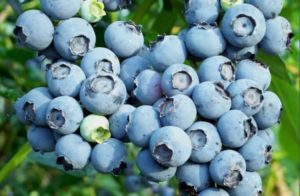Austin Rabbiteye Blueberry
Vaccinium ashei ‘Austin’
Characteristics
- Zone: USDA Zones 7 – 9
- Chill Hours: 500
- Sun: Full Sun or Mostly Sun
- Well-Drained Soil with pH of 4.5 – 5.5
- Native to Southeastern US
- Medium-Large Berry Size
- Harvest in June
Culture
The Austin rabbiteye blueberry is not self-pollinating; it will need a cross-pollinator to produce fruit (Climax and Premier are recommended). Plants are moderately vigorous, productive, and have an upright growth habit. Although fruit ripens early, it typically flowers late enough to avoid the damage of potential late frosts and freezes. Berries are large in size, blue in color, firm, have dry scars, good flavor, and good shelf life. One full-size Austin rabbiteye blueberry plant can produce up to 15 pounds of berries per year and is an excellent choice for organic or EarthKind® orchards.
Noteworthy Characteristics
The best blueberry for Texas is the rabbiteye blueberry (Vaccinium ashei). Rabbiteye blueberries are native to the Southeastern United States and the humid woodlands of East Texas are typical of their native habitat. The Austin blueberry was developed by Dr. Max Austin of the University of Georgia and released in 1996.
Problems
- Berries are less firm than some varieties
- Rabbiteye blueberries do not tolerate alkaline soil or water
- Not drought tolerant, drip irrigation should be provided
- Sensitive to excessive fertilizer and to some types; apply fertilizer only 2 or 3 times a year at low rates. Organic and slow-release synthetic fertilizers are preferable.
Uses
Austin blueberry produces delicate bell-shaped white flowers in the spring that bees will love. Leaves turn burgundy red for outstanding seasonal color in the fall. The blueberries are sweet and flavorful and are ideal for fresh eating, baking, and making jam or jelly. Austin blueberries also freeze well.
